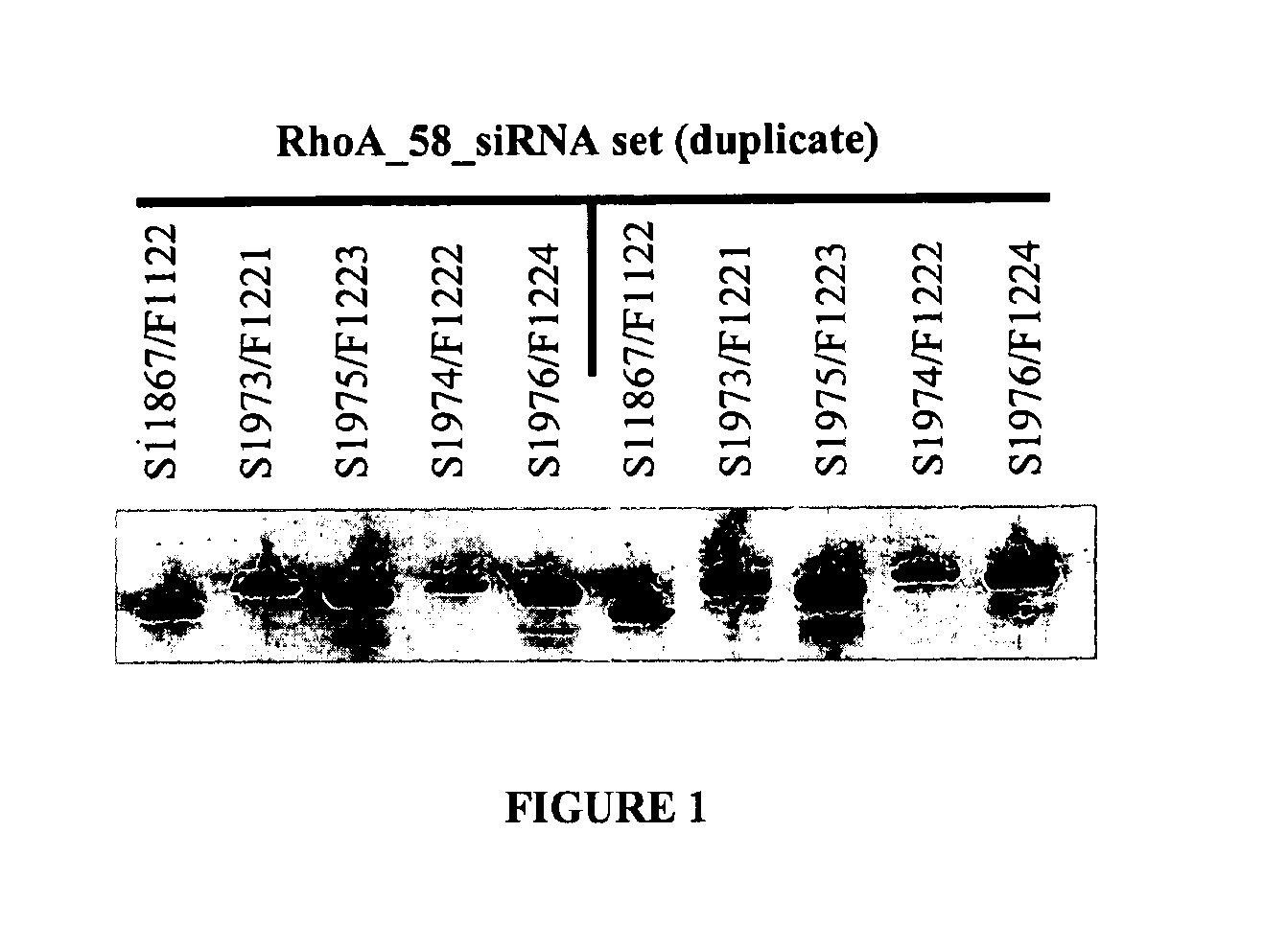Double-stranded nucleic acid compounds
a nucleic acid and double-stranded technology, applied in the field of double-stranded rna (d5rna) compounds, can solve the problems of unwanted toxicities and lack of specificity, and achieve the effect of increasing the plasma stability and increasing the stability of a double-stranded
- Summary
- Abstract
- Description
- Claims
- Application Information
AI Technical Summary
Benefits of technology
Problems solved by technology
Method used
Image
Examples
example 1
6-[5,6,7,8-tetrahydronaphthalene-butyric-C6 (amide) Phosphoramidite (compound of formula V)
[0316]6-[5,6,7,8-tetrahydronaphthalene-butyric-C6 (amide) Phosphoramidite (compound of formula V) was provided by BioLab Ltd.
example 2
6[(5,6,7,8-tetrahydronaphthalene)butyric amide]-SNHS
[0317]A known strategy for conjugation of oligonucleotides to terminal moieties is by modifying the oligonucleotide with a nucleophile—e.g., amine or thiol—and then react it with the corresponding N-hydroxy-succinimide (NHS) ester or maleimide of the desired moiety. However, an opposite approach can also be taken in which the oligonucleotide is modified with an electrophilic NHS ester and is conjugated while still on the support with a nucleophile—such as an amino-, hydrazide-, or hydroxylamine-modified label (On-Column labeling).
[0318]6[(5,6,7,8-tetrahydronaphthalene)butyric C6-amide]-SNHS as well as 6[(5,6,7,8-tetrahydronaphthalene)butyric C6-amide]-NHS were prepared using known in the art methods for the preparation of NHS esters.
example 3
Synthesis of RNA Strands comprising a Phenyl Analog
[0319]Sense and antiisense strands were kindly synthesized by BioSpring (Frankfurt, Germany). Conjugation of the 6[(5,6,7,8-tetrahydronaphthalene)butyric amide]-1-[[(2-cyanoethyl)-(N,N-diisopropyl)]-phosphoramidite]-6-aminohexan-1-ol (also referred to as THNB-C6-phosphoramidite-) at the 5′-end of the oligonucleotide, was achieved by coupling of the phosphoramidite to the growing oligonucleotide chain under standard phosphoramidite coupling conditions unless otherwise specified.
[0320]6 [(5,6,7,8-tetrahydronaphthalene)butyric amide]-SNHS (specifically, 7-(4-5 ,6,7,8-Tetrahydro-naphthalen-2-yl-butyrylamino)-heptanoic acid 2,5-dioxo-3-sulfo-pyrrolidin-1-yl ester—alternatively referred to as THNB-C6-SNHS) is linked to an oligonucleotide modified with a nucleophilic amine group or a thiol group. The nucleophilic functional group reacts with the corresponding N-hydroxy-succinimide (NHS) ester or maleimide of the desired label to obtain the...
PUM
| Property | Measurement | Unit |
|---|---|---|
| volume | aaaaa | aaaaa |
| concentration | aaaaa | aaaaa |
| time | aaaaa | aaaaa |
Abstract
Description
Claims
Application Information
 Login to View More
Login to View More - R&D
- Intellectual Property
- Life Sciences
- Materials
- Tech Scout
- Unparalleled Data Quality
- Higher Quality Content
- 60% Fewer Hallucinations
Browse by: Latest US Patents, China's latest patents, Technical Efficacy Thesaurus, Application Domain, Technology Topic, Popular Technical Reports.
© 2025 PatSnap. All rights reserved.Legal|Privacy policy|Modern Slavery Act Transparency Statement|Sitemap|About US| Contact US: help@patsnap.com



